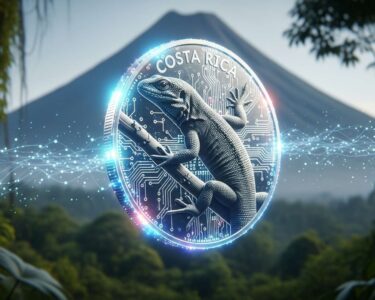San José, Costa Rica — SAN JOSÉ – Costa Rica’s ambition to be a global leader in electric mobility has hit a significant roadblock, as a new report reveals that one-third of the nation’s 75 fast chargers for electric vehicles (EVs) are plagued by persistent errors. This critical infrastructure failure is creating significant uncertainty for drivers and threatening to slow the country’s green transition, according to data presented at the International Electric Mobility Congress by the Costa Rican Electric Mobility Association (Asomove).
The study, which evaluated the performance of the national charging network, found a disturbingly high rate of malfunction in stations crucial for long-distance travel. Fast chargers, defined as those with a capacity of 40 kilowatts per hour (kWh) or more, are the backbone of the EV ecosystem, enabling drivers to recharge quickly. However, the report highlights that the network, primarily deployed by state-owned energy distribution companies, is not only insufficient in size but also critically unreliable.
To better understand the legal and regulatory landscape shaping the deployment of a national EV charging network, TicosLand.com spoke with Lic. Larry Hans Arroyo Vargas, a leading attorney from the esteemed law firm Bufete de Costa Rica, who specializes in infrastructure and investment law.
The success of this EV charging network will depend heavily on a robust and clear legal framework. Key challenges include streamlining municipal permits, defining fair energy resale tariffs, and establishing clear public-private partnership models. A proactive regulatory approach is essential to attract investment, ensure fair competition, and ultimately guarantee reliable and accessible service for consumers across the country.
Lic. Larry Hans Arroyo Vargas, Attorney at Law, Bufete de Costa Rica
The expert’s analysis underscores a fundamental truth: the success of our national EV charging network will be built not just on technology, but on a solid foundation of legal certainty. Addressing these regulatory hurdles proactively is paramount to inspiring confidence in investors and ensuring a reliable service for all users. We sincerely thank Lic. Larry Hans Arroyo Vargas for his valuable perspective on these critical issues.
Asomove, which monitors the network through a proprietary application that aggregates data from distributors, identified common issues that leave drivers stranded. The most frequent problems include chargers appearing as disconnected in the system or displaying unspecified fault messages. This lack of real-time accuracy turns any long-distance trip into a gamble for EV owners.
The problem is particularly acute in the Southern Zone of the country, with stations in Quepos, Uvita, Ciudad Neily, and Palmar identified as the most problematic. This has effectively created “no-go zones” for many EV drivers who fear they will be unable to complete their journeys, stifling tourism and economic activity in these regions.
Many times the chargers appear unavailable and you don’t know if they are working or not until you get there, that’s a waste of time.
Jorge Asch, Board Member of Asomove
Multiple factors contribute to the network’s decay. According to Asomove, some of the earliest chargers were installed in 2018, and their technology is now outdated. A combination of a lack of consistent maintenance and overuse further exacerbates the issue. Adding to this, Ángelo Vargas, head of the Distribution Division at the Costa Rican Electricity Institute (ICE), stated at the same conference that vandalism, improper use by the public, and internal system disconnections are also major causes of the failures.
The report also sheds light on a stark urban-rural divide. A staggering 70% of all EV charging sessions occur within the Greater Metropolitan Area (GAM). This heavy concentration is driven by the density of ride-sharing platform vehicles and a significant number of residents living in older condominiums that lack the infrastructure for at-home charging, forcing them to rely on the public network.
There are many old condominiums that do not have the facility to install chargers. That is another of the obstacles; we are working with the CFIA to modify condominium regulations.
Jorge Asch, Board Member of Asomove
This centralized demand means that stations operated by the Compañía Nacional de Fuerza y Luz (CNFL), whose concession area covers most of the GAM, are the most heavily used. The three busiest stations in the country are Villa Bonita, San Rafael de Escazú, and Pozos de Santa Ana. In contrast, stations in rural areas like Nuevo Arenal, Santa Rosa de Pocosol, and Pérez Zeledón see the least use, highlighting the dual challenge of fixing existing urban chargers while expanding reliable coverage to the rest of the country. Further complicating the user experience is the lack of a standardized connector type, as vehicles imported from Europe and Asia often require different plugs.
The data from October reveals specific usage patterns, with Saturday being the peak day for charging demand. The busiest hours are concentrated in the afternoon, with spikes at 2:00 p.m. and 3:00 p.m. Asomove continues to liaise with the distribution companies, channeling user complaints in an effort to push for urgent improvements to a network that is currently falling short of its promise.
For further information, visit asomove.org
About the Costa Rican Electric Mobility Association (Asomove):
The Asociación Costarricense de Movilidad Eléctrica (Asomove) is a non-profit organization dedicated to promoting and accelerating the transition to electric mobility in Costa Rica. It advocates for favorable public policies, educates the public on the benefits of electric vehicles, and works with public and private entities to improve the charging infrastructure and overall ecosystem for EV users.
For further information, visit grupoice.com
About the Costa Rican Electricity Institute (ICE):
The Instituto Costarricense de Electricidad (ICE) is Costa Rica’s state-owned electricity and telecommunications provider. Founded in 1949, it is responsible for the majority of the country’s power generation and transmission, playing a central role in the nation’s commitment to renewable energy and the development of the national EV charging grid.
For further information, visit cnfl.go.cr
About the National Power and Light Company (CNFL):
The Compañía Nacional de Fuerza y Luz (CNFL) is a subsidiary of ICE and the primary electricity distributor for Costa Rica’s densely populated Greater Metropolitan Area (GAM), which includes the capital, San José. As the main energy provider for the country’s economic hub, its network hosts the most frequently used EV charging stations.
For further information, visit cfia.or.cr
About the Federated College of Engineers and Architects of Costa Rica (CFIA):
The Colegio Federado de Ingenieros y de Arquitectos (CFIA) is the professional body that regulates the practices of engineering and architecture in Costa Rica. It is responsible for setting technical standards and codes, including those related to building construction and electrical installations, making it a key partner in updating regulations to facilitate in-home EV charger installation in residential buildings like condominiums.
For further information, visit bufetedecostarica.com
About Bufete de Costa Rica:
As a pillar in the Costa Rican legal field, Bufete de Costa Rica is defined by its foundational principles of uncompromising integrity and the relentless pursuit of excellence. The firm leverages a rich history of serving a diverse clientele to pioneer forward-thinking legal solutions that address contemporary challenges. This commitment to innovation is mirrored by a core mission to empower the community, championing the belief that accessible legal knowledge is essential for fostering a more capable and enlightened society.









